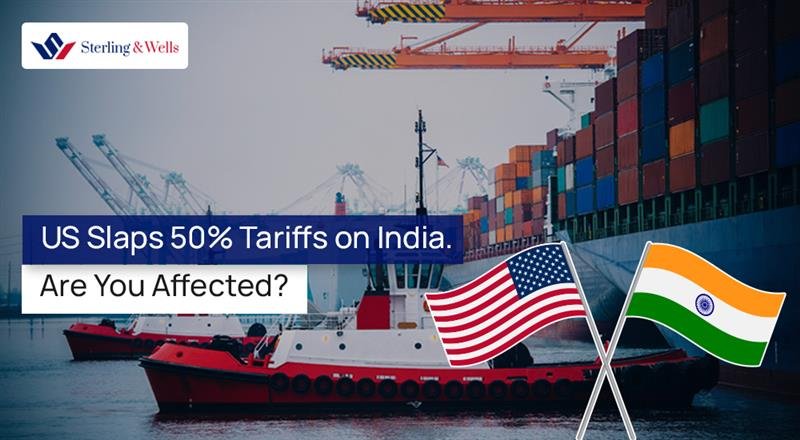US Slaps 50% Tariffs on India. Are You Affected?

The United States has imposed a 50% tariff on Indian goods.
The tariff, which took effect on Wednesday, August 27, 2025, has caught many off guard and sent shockwaves through India’s export sector. But it was not entirely unexpected. American President Donald Trump had already signed an executive order earlier this month adding a 25% levy to an already-imposed 25%, resulting in a cumulative 50% duty on a wide array of Indian products. It was this levy that came into force this week.
What Triggered the US Tariff on India?
The decision to implement such steep tariffs was fueled by geopolitical tensions over energy security. Washington views India’s continued imports of Russian oil as undermining Western efforts to pressure Moscow to end its aggression in Ukraine.
Multiple rounds of trade talks failed to resolve differences, culminating in this unilateral action by the U.S. administration.
Which Sectors Will the Tariff Affect?
The new tariffs impact Indian exports valued at approximately $48 billion annually to the U.S., historically its largest and most profitable market. Labor-intensive industries such as textiles, garments, gems and jewelry, leather goods, automotive parts and food are particularly exposed.
Small and medium-sized enterprises, which form the backbone of India’s export economy, now face a stark increase in costs that could render many product lines commercially unviable. Exporters warn that shipments prepared prior to the deadline can be cleared at older tariff rates only until September 17, 2025, after which the full duties apply.
However, not all sectors are hit equally. Pharmaceuticals and electronics have received temporary reprieves thanks to U.S. domestic demand and lobbying from powerful groups. Exemptions have also been established for categories such as steel, aluminum, automobiles, humanitarian donations and informational materials.
How Has India Responded?
India’s government swiftly adopted crisis management measures to shield its economy. Prime Minister Narendra Modi announced new tax reliefs and incentives for exporters, alongside an emphasis on self-reliance.
Authorities are also expediting negotiations for trade agreements with other partners, notably the United Kingdom, European Union and Southeast Asia, aiming to diversify export markets and reduce reliance on the U.S.
Nevertheless, stock markets in India reacted to the tariff with volatility, and the rupee weakened, reflecting investor concern over diminished trade prospects.
The UK Can Be an Alternative
Amid this disruption, the United Kingdom presents itself as an attractive destination for Indian exporters. Trade talks with Britain are gaining momentum, and the UK’s appetite for Indian goods—including textiles, jewelry, and food products—remains robust. Favorable regulations, deep cultural connections and a thriving Indian diaspora make Britain a logical pivot for traders seeking predictability and growth beyond U.S. shores.
Conclusion
The enactment of a 50% U.S. tariff on Indian goods marks one of the most consequential changes in global trade this decade. The resulting challenges for Indian traders, though formidable, have sparked innovation and rapid realignment.
By focusing on government support, new reforms, and expanding ties with partners like the UK, India’s export sector can adapt and thrive, even in the face of the harshest external shocks.
Sterling & Wells
We are Sterling & Wells — a UK-based team of accountants and tax advisors helping individuals and businesses stay fully HMRC compliant. From VAT and bookkeeping to self-assessments and tax planning, we’ve got your finances covered.